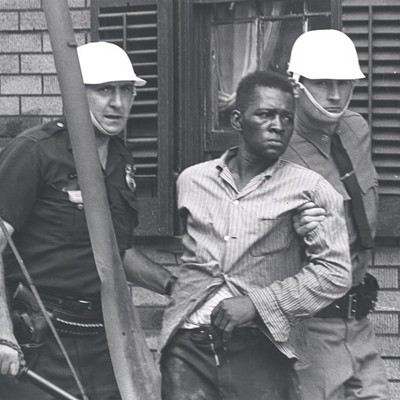
In the summer of 1964, a few weeks before my 15th birthday, the city I grew up in, Rochester, N.Y., suffered what was then called a race riot. The violence killed four people, injured 350 and resulted in 1,000 arrests and the looting of 200 stores — all of it triggered by the police arrest of a black man and an over-use of force.
The three days or rioting, burning and arrests presaged years of summer outbreaks of violence in U.S. cities, culminating — or so it seemed at the time — in the “Long, Hot Summer” of 1967 when 159 race riots erupted in cities as geographically diverse as Buffalo, N.Y., Newark, N.J., Saginaw, Mich., and Portland, Ore.
After that summer, President Lyndon Baines Johnson created a group to study the root causes of the violence and recommend solutions. The National Advisory Commission on Civil Disorders, better known as the Kerner Commission, produced a report in February 1968 that excoriated federal and state governments for failing black communities across the country and warned:
“Our nation is moving toward two societies, one black, one white — separate and unequal.” … “What white Americans have never fully understood but what the Negro can never forget — is that white society is deeply implicated in the ghetto. White institutions created it, white institutions maintain it, and white society condones it.”
The Kerner Report also chastised the news media, “The press has too long basked in a white world looking out of it, if at all, with white men’s eyes and white perspective.” It was a condemnation that despite years of effort to diversify America’s newsrooms echoes today.
More than a half-century later, Minneapolis burns, set on fire by rage and anger over yet another police killing of a black man,
A Rutgers University study in 2019 found that, as reported in the Los Angeles Times, “About 1 in 1,000 black men and boys in America can expect to die at the hands of police, according to a new analysis of deaths involving law enforcement officers. That makes them 2.5 times more likely than white men and boys to die during an encounter with cops.”
I, as a white man, cannot say anything about what it must be like to be black in this country, much less to be black and male and therefore be an object of suspicion and fear even in the act of doing the most routine of things, such as running on the street or bird-watching in Central Park.
I have been arrested — multiple times. I am not proud of it, but it was something that happened during those years after the Long Hot Summer when political protests took, for a time, the place of race riots and when the waves of drug abuse carried some of us to places we should not have gone. Never, though, whether it was in New York or Los Angeles or Ukiah, Calif., did I feel that when the police officer put his hands on me I was in danger of losing my life. Never.
Fifty-six years ago, the 14-year-old version of myself stood on the curb outside his suburban house and watched plumes of dark smoke rise over what was known as Rochester’s ghetto. I never saw the riot, save in black-and-white reports on the evening news, but I recall the unease I felt. I sensed, hearing the sirens in the distance and seeing the tension on the face of my mother alongside me, that the world was more complex than I knew and within that intricacy were insidious, dangerous things. In that moment, the first bricks fell from the wall of innocence behind which I lived. Within a few years, nothing but rubble would remain.
The cop in Minneapolis murdered George Floyd. That’s clear. What remains muddied is why? Not just why the cop did it — which I suspect will result in a simple answer: racism and power — but why we, the society as a whole, which remains mostly white, tolerate the deaths of black men who are dying solely because they don’t look like me. Why?
To find the answer, and to begin cleansing ourselves of the racist toxicity that is poisoning us, we can look again to where the Kerner Report lay the blame for the riots of 1967:
“White institutions created it, white institutions maintain it, and white society condones it.”
Said another way: When black men die, we white people are to blame.
